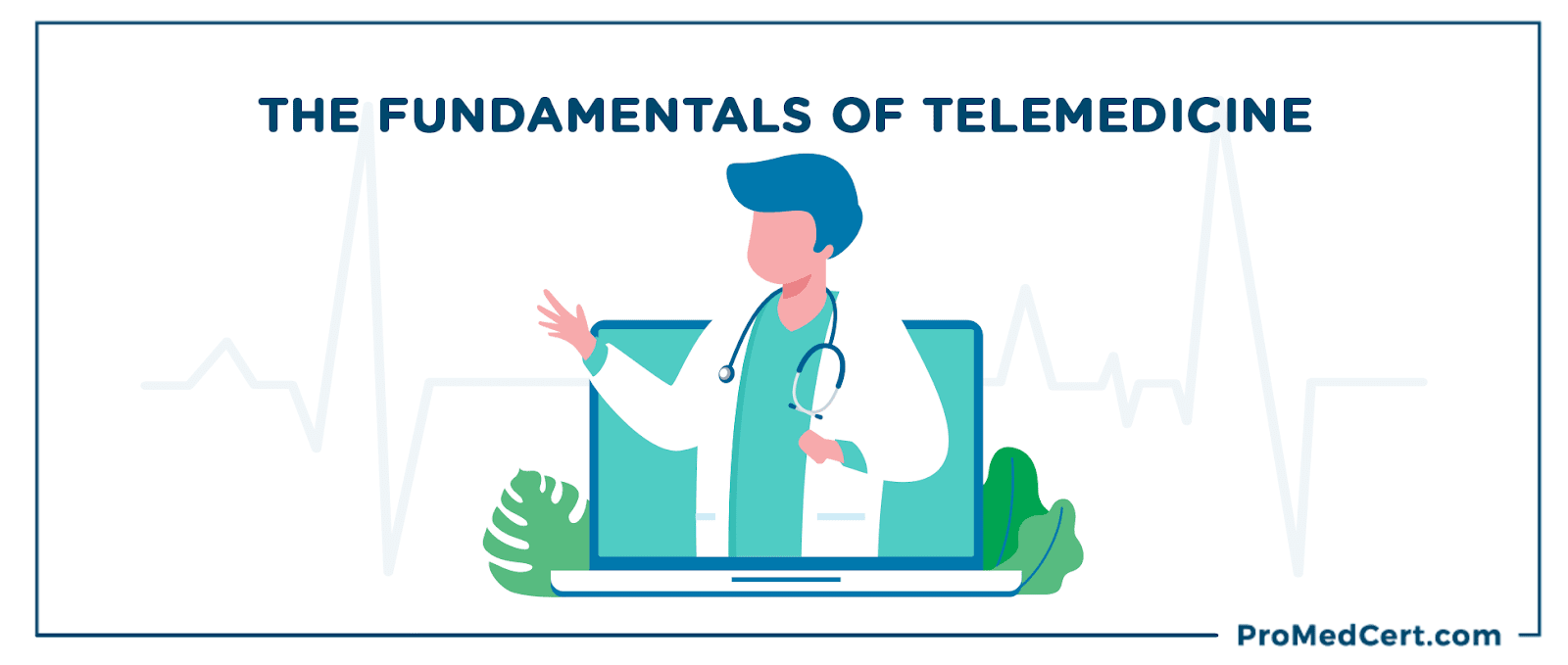The Fundamentals of Telemedicine

Being a medical professional in the current climate means needing to take professional versatility to a whole new level. Not only do you need to manage COVID-19 and the shifts that it brings, but also still take care of all the other medical conditions your patients may have. One key tool that’s helping to relieve the burden is telemedicine. While telemedicine was already on an upwards trend prior to the pandemic, lockdowns made it an outright necessity, causing practices to quickly have to learn to adopt it.
Fast-forward to today and restrictions are starting to loosen, but the need for telemedicine is still here, and may never go away. Here’s a close look at what telemedicine entails, and the benefits it provides in this uncertain time.
What Is Telemedicine?
Telemedicine is a subset of the greater concept of telehealth. Telehealth is the idea of using remote technology to provide health support to a group of people or individual people. Telemedicine strictly focuses on clinical cases where a medical professional actually has one-on-one time with a person. To give you an idea with some examples, a telehealth app may be a sort of warning system that lets people know about public health crises in their area. A telemedicine app may connect people to doctors in their area available for video chats.
Part of what has set the stage for telemedicine is a growing comfort with the technology that powers it, especially with the advent of COVID-19. Remote learning and offices have turned many of us into experts with platforms like Skype, Zoom, and Facetime. This means there’s a great acceptance of the technology and more people have mobile/computer access to use them.
Telemedicine has evolved to handle a few different needs and trends, so let’s showcase some situations where it’s being put to use.
Proximity: This was the original use for telehealth, serving as a way to treat patients who live in areas that are remote with minimal medical help nearby. There are still many parts of the world that still need this type of support, and telemedicine at least helps them get some rudimentary care or advice. The alternative would be either long trips for even basic health concerns, or potentially forgoing care they may need.
Convenience: This is probably the largest reason for telehealth’s explosion over the past few years. The fact is that busy people have very limited free time and it can be hard for overworked primary care providers to meet their schedule. This is part of the reason that urgent care is becoming so popular, but telemedicine companies provide even more convenience. These businesses allow 24/7 medical care with a doctor that’s on-call for the company. Some allow for health centers to get access to specialists if they need to outsource a special case, or simply facilitate virtual visits between doctors and patients. As the healthcare environment gets more competitive, this can serve as a nice value proposition.
Mobile Health: Have you noticed the rise in use for mobile apps/wearable tech in the health field? Many people are investing in devices they use to help take their vitals, check glucose levels, and get other biometric information. Many telemedicine companies allow the ability to send that information to doctors remotely. This is a huge boon for telemedicine because it eliminates one of the major drawbacks—the inability to get certain information without seeing a doctor.
Telemedicine and COVID-19
Of course, COVID-19 is at the front of every medical professional’s mind, so we need to talk about some of the ways that it is helping in this particular crisis, also.
Social Distancing: For the time being, it’s important for everyone to try to maintain as much distance from others as possible to reduce the risk of spread. This especially applies to those at greater risk or with pre-existing conditions. Telemedicine is an essential addition here because it allows people in those categories to check in with a doctor without needing to leave the safety of their home. This also allows for more protection for doctors, who may come into contact with dozens of patients a day otherwise.
Reduced Workload for Healthcare Providers: Because we’re still learning about COVID-19 and how it impacts the body, combined with the variance of symptoms, there are many people who may think they have it even if they don’t. Telemedicine is important here because it serves as a way for people to have their concerns attended to. Heading to a hospital may not be of any benefit for you if you only have mild symptoms and no health history. Telemedicine keeps you from potentially exposing others as well as taking a trip to the hospital with little results.
Addressing Healthcare Disparity: The original purpose of telemedicine is also coming to the forefront again. We are seeing how the health infrastructure of different states and communities is widely varied in terms of the ability to weather COVID-19 outbreaks. Telemedicine at least helps those with non-COVID health issues get some form of care and guidance, no matter the status of their local healthcare system.
The ability to provide expert care and advice remotely is a great way to ensure that people get the care they need without putting themselves or healthcare professionals at any unnecessary risk. However, hand in hand with this goes using technology and remote services to handle other healthcare concerns as well. One key thing to look at is an online medical certification. This is a great way to make sure you are compliant and up-to-date with new medical practices and regulations, but the quality of instruction is only as good as the provider you choose.
This means you want a company like ProMed. We provide certification courses created by expert healthcare professionals, holding to AHA and ILCOR guidelines. Get your recertification with areas like ACLS, CPR, BLS, and PAS, and take advantage of our 100% guarantee if you’re not satisfied.

